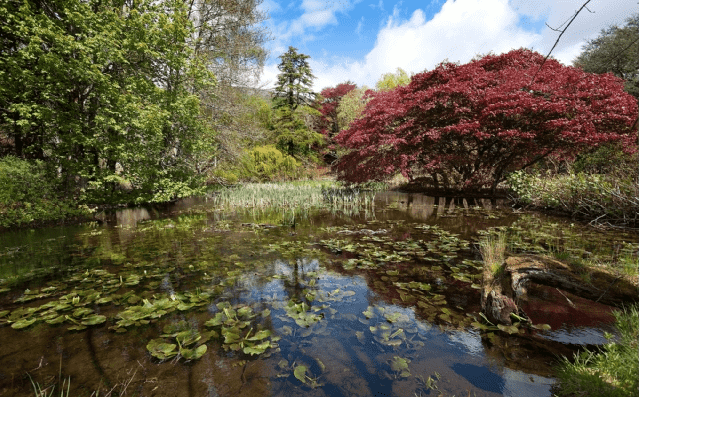Between the Highland villages of Comrie and St Filians, in a picturesque corner of the Perthshire countryside, lie the remnants of a grand Victorian mansion. Surrounding it are the tangled remains of what was once the finest garden in all of Scotland – the so-called lost gardens of Dunira. And after 60 years of neglect, a new owner is being sought to restore them to their former glory.
The history of Old Dunira House is a fascinating one. It was built for Sir David Dundas in 1852. However, the gardens weren’t laid out until 1919, when a wealthy shipping family called the Macbeths charged landscape architect Thomas Mawson with transforming the challenging grounds into a varied series of garden spaces.
Known as the ‘Capability Brown of Empire’ due to his work both at home and abroad, Mawson fell in love with Dunira’s extraordinary setting, describing it as ‘one of the most beautiful estates it has ever been my pleasure to study’. His plans for the gardens comprised strong axial lines, dividing walls creating formal areas, woodland paths, burns and water features, all softened by delicate flowerbeds. He detailed the process in the final edition of his folio manual, The Art and Craft of Garden Making, published in 1926. An article on the gardens was published in Country Life in March 1931, and an attractive sale catalogue for the original estate was produced in 1937 when William Macbeth put Dunira on the market.
Dunira didn’t sell and remained in the Macbeth family, the house being used as a military convalescent home during the Second World War. Then in 1947, as the Macbeths prepared to move back in, a fire razed it to the ground. When it was finally sold in 1950, the estate was divided up and the gardens fell into neglect. Today reminders of the house and garden lie scattered across the landscape: a grand staircase here; part of a fountain and stream there.
The site of the house and gardens have now been put on the market for offers over £750,000 (the estate is under separate ownership) and its new owners will have planning permission to build a large house with separate staff quarters. But there’s a proviso: planning permission is on condition that the 17-acre gardens are restored to Mawson’s original designs.
Not only is this a unique chance for anyone wishing to build their own house, it’s a prime opportunity for a keen gardener, architect or historian to make the most of this special setting.
.jpg)
.jpg)
.jpg)

.jpg)
.jpg)
.jpg)